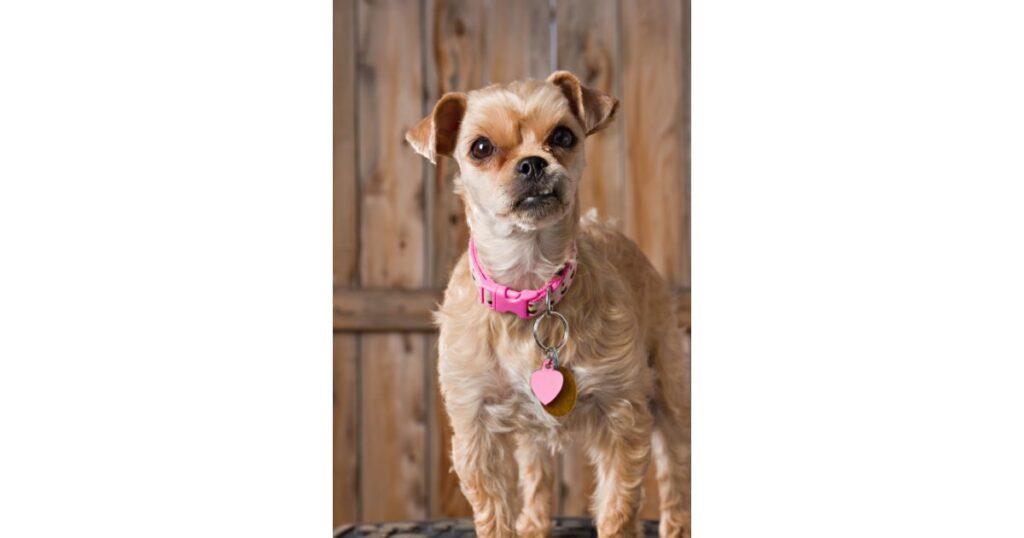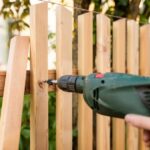As responsible pet owners, we understand the importance of keeping our furry friends safe and secure. For many of us, investing in an underground dog fence system. These invisible fences offer a practical solution to keep our dogs within designated boundaries without physical barriers. However, a common question that arises among dog owners who use underground dog fences is are underground dog fence collars interchangeable
In this article, we delve into the world of underground dog fence collars to provide you with a comprehensive understanding of their compatibility. Can you mix and match collars from different manufacturers? Are there universal collars that work with various systems? What factors should you consider when deciding whether to swap out your dog’s collar? These are the questions we aim to answer, so you can make an informed decision about the collars that best suit your pet’s needs while ensuring their safety and containment.
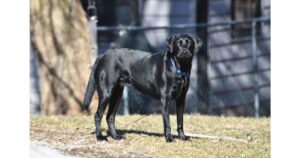
How Do Underground Dog Fence Systems Work?
Table of Contents
ToggleUnderground dog fence systems provide a sophisticated and efficient way to keep your furry friend within set boundaries without the need for visible fences. These systems operate on the principles of radio frequency technology and positive reinforcement.
The system comprises two main components: the buried boundary wires and the specialized collar worn by the dog. The boundary wires are discreetly placed underground, creating an invisible perimeter that defines the safe zone for your pet. The collar is equipped with a receiver that communicates with the buried wires.
As your dog approaches the boundary, the collar receiver picks up the radio signals emitted by the buried wires. When the dog gets closer to the perimeter, the collar emits a warning tone, alerting the dog to the proximity of the boundary. If the dog continues to approach the perimeter, the collar delivers a mild static correction.
Over time, your dog learns to associate the warning tone and static correction with the invisible boundaries. Through repetition and consistent training, your pet understands where they should and shouldn’t go, ultimately preventing them from crossing the boundaries.
In essence, underground dog fence systems offer an effective blend of technology and behavioral conditioning to ensure your dog’s safety while allowing them the freedom to explore within designated limits.
Are underground dog fence collars interchangeable? Understanding Collar Compatibility
Collar compatibility is a crucial aspect when it comes to underground dog fence systems. While the concept of interchangeability might seem simple, there’s more to it than meets the eye. Collar compatibility refers to whether a collar from one brand or model can be effectively used with another brand’s system.
Are Underground Dog Fence Collars Interchangeable. These specialized collars communicate with the boundary wires and deliver corrective signals to your dog. However, not all collars are universally compatible due to variations in signal frequencies, programming methods, and proprietary technologies employed by different manufacturers.
For a collar to work seamlessly with a specific system, it must be designed to match that system’s unique signals. Mixing and matching collars and systems without verifying compatibility can lead to ineffective containment, confusion for your dog, and even safety risks.
To ensure proper collar compatibility, it’s advisable to consult the manufacturer’s guidelines and compatibility charts. These resources provide insight into which collars are suitable for a particular system. Relying on accurate information prevents frustration and ensures your dog’s safety within the designated boundaries.
In summary, collar compatibility is a critical factor in the functionality and effectiveness of your underground dog fence system. Thoroughly researching and confirming compatibility before making any decisions will lead to a secure and successful containment solution for your beloved pet.
Are Underground Dog Fence Collars Interchangeable? Factors Affecting Interchangeability
The question of whether underground dog fence collars are interchangeable is not a straightforward one. The compatibility of collars with different fence systems depends on a variety of factors that contribute to their effectiveness and functionality. Let’s delve into the key factors that influence collar interchangeability.
1. Signal Frequencies: One of the primary factors determining compatibility is the signal frequency used by the collar and the fence system. Collars and systems from different brands often utilize specific frequencies to communicate. If the collar’s signal frequency does not align with the system’s frequency, it won’t be compatible. Brands develop their proprietary technologies, making it essential to ensure that the frequencies match for effective operation.
2. Programming Methods: Collars and fence systems are designed to work together based on specific programming methods. Each collar is programmed to respond to the signals emitted by the corresponding system. If the programming methods don’t align, the collar might not function properly with a different system. It’s crucial to verify that both the collar’s programming and the system’s programming are compatible.
3. Correction Levels: Different fence systems offer varying levels of static correction to deter dogs from crossing boundaries. The correction levels are often calibrated to suit a specific collar’s sensitivity. Using a collar with a different correction level can result in ineffective containment or unnecessary discomfort for your dog.
4. Technology and Features: Collars come with various technologies and features designed to enhance their performance. Some collars have adjustable sensitivity settings, while others might have progressive correction levels. These features are tailored to specific fence systems and might not function optimally with other brands.
5. Manufacturer’s Specifications: Manufacturers provide specifications and compatibility information for their collars and systems. These guidelines offer insights into which collars are compatible with particular systems. Relying on the manufacturer’s specifications ensures accurate compatibility and effective containment.
6. System Design and Signal Transmission: The design of the fence system and how signals are transmitted play a role in collar compatibility. Different systems may have unique ways of transmitting signals to collars. An incompatible collar might not pick up the signals accurately, rendering the system ineffective.
7. Brand-Specific Technologies: Many manufacturers incorporate proprietary technologies that contribute to their system’s overall performance. These technologies might not be present in collars from other brands, affecting the collar’s functionality when used interchangeably.
8. Safety Considerations: Interchanging collars without proper compatibility verification can compromise your dog’s safety. Incompatible collars might not deliver the appropriate warning signals or corrective measures, leading to your dog’s confusion and potentially putting them at risk.
Brands and Their Unique Systems
Different brands offer underground dog fence systems with their collar options. These collars are engineered to communicate exclusively with their respective systems. Brands develop collars that align with their frequencies, ensuring accurate functionality.
Are Underground Dog Fence Collars Interchangeable. Steps to Determine Interchangeability
Ensuring that underground dog fence collars are interchangeable involves a careful process of assessment and verification. Here’s a concise guide on the steps to determine if collars from different systems can be used interchangeably:
- Check Manufacturer Guidelines: Start by reviewing the manufacturer’s guidelines and specifications for both the collar and the system. Manufacturers often provide compatibility charts or information on which collars can work with specific systems.
- Match Signal Frequencies: Confirm that the signal frequency of the collar matches the frequency of the system. Collars and systems need to communicate on the same frequency for effective operation.
- Compare Programming Methods: Assess the programming methods of the collar and the system. Ensure that the collar’s programming aligns with the system’s programming to prevent conflicts or malfunctions.
- Examine Correction Levels: Compare the correction levels offered by the collar and the system. The collar’s correction levels should match the system’s to prevent discomfort or ineffective containment.
- Review Technology and Features: Consider any unique technologies or features present in the collar and the system. Features like adjustable sensitivity or progressive correction should be compatible to ensure optimal performance.
- Seek Professional Guidance: If you’re uncertain about compatibility, contact customer support of the collar and system manufacturers. They can provide accurate information and recommendations based on your specific situation.
- Trial and Observation: If you’re considering using collars interchangeably, conduct a trial within a controlled environment while closely observing your dog’s response. Monitor for any inconsistencies or unusual behavior.
- Safety Priority: Prioritize your dog’s safety. If there’s any doubt about compatibility, it’s better to err on the side of caution and avoid using non-compatible collars.
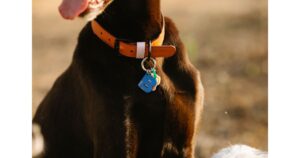
Are Underground Dog Fence Collars Interchangeable. Benefits of Interchangeable Collars
Interchangeable collars for underground dog fence systems offer several advantages that can enhance convenience and flexibility for pet owners. While not all collars are interchangeable, using compatible options across different systems can bring about positive outcomes. Here are some benefits to consider:
1. Cost-Effectiveness: Interchangeable collars can be a cost-effective solution, especially for households with multiple dogs. Instead of purchasing a separate collar for each pet containment system, you can invest in a few compatible collars and switch them between dogs as needed.
2. Transitioning Between Systems: If you move or switch to a different brand of pet containment system, having interchangeable collars can simplify the transition. This eliminates the need to purchase entirely new collars, saving both time and money.
3. Multi-Pet Households: For homes with multiple dogs, interchangeable collars allow you to standardize your containment solution. You can select collars that suit the individual needs of your pets and then interchange them as required.
4. Backup and Spares: Having a few interchangeable collars on hand can serve as backups in case one collar malfunctions or needs charging. This ensures that your dog remains safely contained even if one collar is temporarily out of commission.
5. Easier Management: Switching collars between dogs becomes straightforward, enabling you to allocate containment resources where they’re needed most. This can be particularly useful when one dog requires stricter containment than another.
6. Travel and Visits: If you’re traveling with your dog or taking them to a friend’s house with a different containment system, an interchangeable collar can provide a consistent containment experience.
7. Training Flexibility: Different dogs may require different levels of correction during training. Interchangeable collars allow you to adjust the correction levels for individual dogs without needing multiple systems.
8. Reduced Clutter: Instead of storing multiple collars for different systems, having a few interchangeable collars can help declutter your pet supplies and storage space.
9. Environmentally Friendly: Using fewer collars by interchanging them reduces the overall demand for manufacturing and materials, which can contribute to a more eco-friendly approach.
Are Underground Dog Fence Collars Interchangeable? Potential Drawbacks
Using non-compatible collars can result in malfunctioning or ineffective systems. Incompatible signals might confuse dogs or render the corrective features useless.
Proper Collar Fit and Functionality
Even with compatible collars, proper fit is crucial. A well-fitting collar ensures accurate signal transmission and comfortable wear for your furry friend.
Considerations for Mixed-Breed Dogs
When it comes to using underground dog fence collars for mixed-breed dogs, there are several important considerations to keep in mind. Mixed-breed dogs often come with diverse physical characteristics, sizes, and temperaments. Here are key factors to consider when using these collars for your unique furry friend:
1. Size and Build: Mixed-breed dogs can vary widely in size and build. Ensure that the collar you choose is adjustable and can comfortably fit your dog’s neck. A proper fit is essential for accurate signal transmission and effective containment.
2. Coat Characteristics: Mixed-breed dogs might have different coat types, lengths, and thicknesses. Collar contact points need to reach the dog’s skin for proper functioning. Long or thick coats might require longer contact points to ensure consistent signals.
3. Sensitivity: Different breeds contribute to varying sensitivity levels. Some dogs might respond more strongly to correction, while others may need milder corrections. Choose a collar with adjustable sensitivity settings to cater to your dog’s unique temperament.
4. Training Approach: The training approach for mixed-breed dogs should consider their individual behavioral tendencies. Some breeds are more stubborn, while others are highly trainable. Collar settings and training methods should be tailored accordingly.
5. Mixed Behavior Traits: Mixed-breed dogs often inherit a blend of behavior traits from their parent breeds. Understanding these traits can help you determine the appropriate correction levels and training techniques.
6. Comfort and Tolerance: Pay attention to how your mixed-breed dog responds to the collar. Some dogs might adapt quickly, while others might take time to get used to the sensation. Gradual introduction and positive reinforcement can help them associate the collar with safety.
7. System Compatibility: Ensure that the collar you choose is compatible with the specific containment system you’re using. The collar’s frequencies, correction levels, and programming methods must align with the system’s requirements.
8. Monitoring and Adjustment: Monitor your mixed-breed dog’s behavior and response to the collar. Make necessary adjustments to the collar’s settings based on your dog’s behavior and progress during training.
9. Professional Advice: If you’re uncertain about selecting the right collar for your mixed-breed dog, consult a veterinarian or professional dog trainer. They can provide insights based on their expertise and knowledge of different breeds.
Conclusion
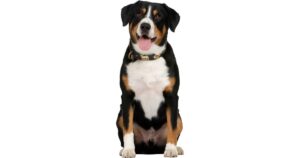
Are Underground Dog Fence Collars Interchangeable? In the world of underground dog fence collars, compatibility isn’t always a given. It’s crucial to thoroughly research and confirm compatibility before attempting to use collars interchangeably. Always prioritize your dog’s safety and well-being by choosing collars that work seamlessly with your specific system.
In the realm of underground dog fence systems, the question of whether collars are interchangeable has shed light on a complex yet essential topic. As responsible pet owners, our priority is to ensure our furry companions’ safety and well-being while providing them with the freedom to explore within defined boundaries.
In the pursuit of the perfect containment solution, pet owners must invest time in understanding their specific system, collars, and their pet’s characteristics. Thoroughly reviewing compatibility charts, consulting manufacturer guidelines, and seeking professional advice when needed are essential steps to ensure successful and safe utilization of interchangeable collars.
FAQs
How much does it cost to replace an invisible fence collar?
The cost to replace an invisible fence collar can vary depending on several factors. These factors include the brand and model of the collar, where you purchase it, whether you opt for an original manufacturer’s collar or a third-party alternative, and any additional features or technologies included in the collar. Here’s a breakdown of what you can expect in terms of cost:
- Original Manufacturer’s Collar: If you choose to replace your invisible fence collar with one provided by the original manufacturer of your fence system, the cost can range from $100 to $300 or more. The price often depends on the specific model and any advanced features it may offer.
- Third-Party Collar: Some pet owners opt for third-party collars that claim to be compatible with a range of underground fence systems. These collars may be more affordable, with prices typically ranging from $50 to $150. However, it’s crucial to ensure that the third-party collar is indeed compatible with your specific system and that it meets safety and performance standards.
- Additional Features: Collars with advanced features, such as rechargeable batteries, adjustable correction levels, or compatibility with smartphone apps, tend to be on the higher end of the price spectrum. Expect to pay more for collars with these added capabilities, often exceeding $200.
- Purchase Location: Prices may also vary depending on where you purchase the replacement collar. Shopping directly through the manufacturer’s website or authorized dealers may offer some assurance of authenticity but can be more expensive. Online marketplaces and pet supply stores might have competitive pricing options.
- Installation Costs: Keep in mind that there may be installation costs associated with setting up the new collar, particularly if you require professional assistance. Some underground fence companies offer installation services for a fee.
- Warranties and Guarantees: Consider whether the replacement collar comes with any warranties or guarantees. Some manufacturers offer warranties that cover collar replacement in case of malfunction or damage.
In conclusion, the cost to replace an invisible fence collar can range from $50 for basic third-party options to $300 or more for advanced models from the original manufacturer
Can a dog jump over an invisible fence?
Yes, it is possible for a dog to jump over an invisible fence, but several factors come into play when determining whether a dog will attempt to do so and whether they will succeed. Here are some key points to consider:
- Dog’s Size and Agility: Smaller dogs are less likely to jump over an invisible fence than larger, more agile breeds. However, it’s essential to remember that determined or motivated dogs of any size can potentially attempt to jump over.
- Training and Behavioral Factors: The effectiveness of an invisible fence largely depends on the dog’s training and behavior. Dogs that have been properly trained to understand the boundaries and have associated crossing them with uncomfortable sensations are less likely to attempt to jump over the fence.
- Motivation: If a dog is highly motivated to reach something on the other side of the fence, such as another animal, food, or an enticing scent, they may be more inclined to attempt to jump over the barrier.
- Fence Height: The height of the invisible fence boundary is a crucial factor. While the underground wire establishes a virtual boundary, physical barriers like traditional fences or natural obstacles (hedges, walls, etc.) can discourage or prevent a dog from attempting to jump over.
- Correction Level: Invisible fence systems typically deliver a correction (usually a static or vibration sensation) to deter a dog from crossing the boundary. If the correction level is too low or the dog is not properly conditioned to associate it with crossing the boundary, it may be more inclined to jump over.
- Supervision: Providing adequate supervision and training during the initial stages of introducing your dog to the invisible fence is essential. This helps reinforce the boundaries and reduces the likelihood of the dog attempting to escape.
- Individual Variation: Dogs have different temperaments and behaviors, so there is no one-size-fits-all answer. Some dogs may never attempt to jump over, while others may test their boundaries.


